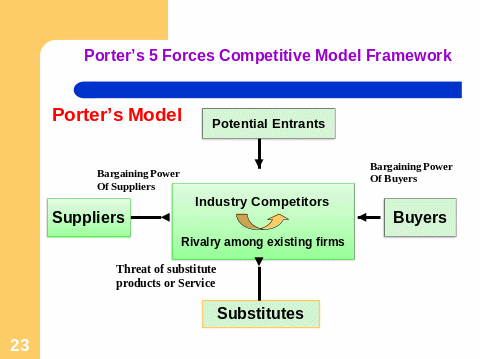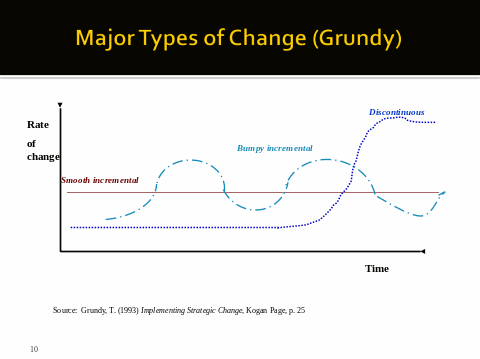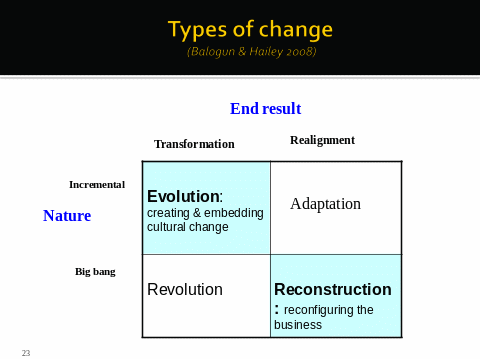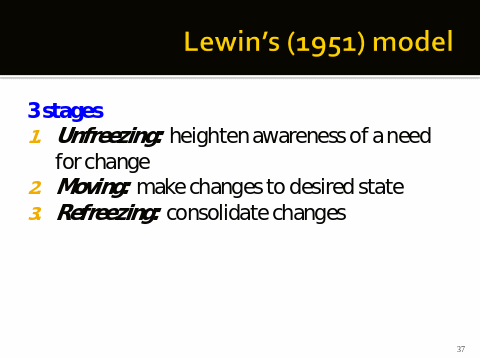Executive summary
H&M is one of the principal retailers in Europe supplying various clothing brands, cosmetics, and denim. The company came into existence in 1947 in Sweden and it is currently operating in more than 30 countries. It is also one of the leading companies in the international market offering quality goods at a pocket-friendly price for customers. It is also apparent that 92% of the company’s stores are based in foreign countries with only 8% operating at the domestic level.
The company is well known for its fashionable and inexpensive brands of clothes. Initially, the company was dominated by women’s clothing. Later on, an increase in demand for the fashion brands prompted its management to introduce menswear. It is beyond doubt that H&M has been considered to be among the world’s favorite for producing high-quality and fashionable clothes and apparel for both women and men.
This company has developed a variety of brand names such as Rocky, BiB, Conwell, and Hennes that have been used to market its clothes. This has enabled it to capture the global market all over Europe America and other parts. Regarding the issue of pricing, the company has set lower prices for its target audience hence it can capture a larger market against its competitors. Additionally, H&M distributes its products to clients and consumers directly.
Notably, the company has distinguished supplier stores of clothes apparel and cosmetics all over the world. This has been made easier by the fact that there are more than 1500 stores located in different countries such as Canada, Montreal, USA, Australia, and London. Additionally, H&M promotes and advertises its products through e-marketing, prints, video adverts, and telephones so that customers may have a follow-up of the market trend.
Introduction
H&M was founded in 1947 by Erling Person in Sweden. The company has a wide range of fashion wears for men, women, and children. The main goal of H&M is to avail all the innovative designs of clothes apparel and cosmetics for different types of people in the world. Its mission statement is ‘Fashion and Quality for best price”. In line with this, the company’s vision is to promote economical, social, and environmental sustainability in its operating cycle.
This is regarding producers, suppliers, customers, and products. Besides this, the company values are to produce high-quality products that are cost-effective and to meet the customers’ demands effectively. In this case, the company supplies all types of clothes designs apparel and cosmetics in various parts of the world. Presently, the company has branches in more than 37 countries all over the world. The geographical market of the company is very wide covering all the European markets, the USA, Asia, Australia, and the UK. H&M is also committed to social corporate responsibilities to meet its customers’ obligations.
Through this, the company has been able to the device all forms of fashionable products at the best price thus enhancing its profitability and growth. The company employs a holistic approach to enhance its corporate social responsibility making it sustainable to run the organization. Hennes & Mauritz AB (H&M) was incepted way back in 1948 and has been an active player in the designing, manufacturing, distribution, and selling of clothing materials.
It is based in Sweden with several marketing points both at the local and international levels (H & M., 2005). For decades now, the company has been a major competitor in the clothing industry by producing a wide range of clothing designs and associated accessories. For instance, its clothing range includes but is not limited to footwear, cosmetic products, and related accessories, sports fittings for all both minors and adults as well as inner-wears for all types of users.
To date, there are an estimated 20 production offices hosted by the company. In terms of its supplies especially for raw materials, H&M has a wide network of independent suppliers derived from Europe and Asia who provide the company with adequate goods need for continued production. Moreover, the company has so far managed to expand its operations in over 37 countries with an estimated two thousand retail outlets spread across these locations (H & M., 2008).
Nonetheless, Sweden, the United Kingdom, and Germany still serve as the principal markets for H&M. In terms of marketing, H&M makes use of a mixed variety of marketing strategies to reach out to its wide clientele base. For instance, it is currently embracing online marketing through the internet as well as catalogs which are found both online and in real physical stores. As part of its geographic expansion program, internet marketing has been adopted beyond Sweden, the host country for the company.
Customers in Austria, Germany, the Netherlands, Norway, Finland, and Denmark can now obtain product details through online shops and catalogs. As already mentioned, H&M was established towards the close of the 1940s. The brainchild behind the company was Erling Persson. During the threshold years, the company was dealing with women’s clothing, but it later diversified to incorporate clothing needs for the entire family.
The expansion into men’s wear in 1968 was occasioned by the acquisition of Stockholm hunting equipment store which had been mainly dealing with men’s fittings. Mauritz Widforss was a key player in male clothing and upon its acquisition by Persson, H&M broadened its production perspective. Consequently, the new acquisition together with the old store was rebranded as Hennes & Mauritz (H&M).
Currently, most of the manufacturing courtesy of H&M is carried out in most European and Asian countries such as Turkey, Pakistan, India, Egypt, China, and Bangladesh (H & M., 2008). Besides, the company has also segmented its market through psychographics such as lifestyle, social classes, and personal preferences. This has made it easy to examine customers’ habits, self-concept, and loyalty. This has boosted customers’ satisfaction since their interests are met effectively. In this case, the company has devised a better market entry plan that has enabled it to keep moving amid competition for other international companies.
External Environment The main objective of this research study is to explore, evaluate, and critically analyze the major changes that took place in H&M from 2005 to 2010. Besides, the paper seeks to incorporate the latest models and change theories that are relevant to H&M. The availability of sufficient data on the activities of H&M since it was established will indeed facilitate the research work on this topic. Hence, secondary research will be used throughout the research study. Consequently, information for the essay will be acquired through the internet, books, journal articles, magazines, and newspapers.
This research study aims at circumnavigating through the changes which took place in H&M between 2005 to 2010 with the application change models and theories about the company. Although the secondary research method may be quite smooth to undertake since it entails referring to other people’s work, this research method is not void of its limitations. For instance, there is a higher likelihood of encountering outdated sources or those that require permissions to access. Such limitations may hinder the validity and soundness of information being gathered. There are main factors that have been impacting on the level of the company’s attractiveness.
For instance, environmental responsibility has been enhanced to cater to the sustainability of workers and employees. The company has also been keen on making decisions related to the nature of products [produced to enhance that they are environmentally friendly. In this case, the company has fostered organic growth of cotton through conventions hence there has been a reduction of environmental pollution from fertilizers and pesticides.
As of 2008, the company has a major focus on the reduction of carbon emissions and checking the impact of cotton production on the water cycle. This affects the company since it has to strive to improve its production with less damage to the environment. Additionally, this company has initiated qualitative means of ensuring that its products do meet and exceed consumers’ tastes. In this case, the production of quality and standard goods has enhanced the profitability and growth of the company’s market. Moreover, the H&M market environment has been favorable and thus the company has extensively increased its target market every year.
The company’s stores are quite attractive thus becoming a crucial factor for the expansion of its market. The fact that the environment has been favorable market-wise; has motivated the company to produce more fashionable goods that will satisfy clients’ needs.
H&M’s Financial Performance The Company is financially stable and this explains the reason why it has been able to expand to different regions yet remains top among the leading companies in the world. Over the last 5 years, the company’s financial trend has been very impressed with its annual earning showing positive growth despite the hard economic times. In return, this has pursued the company toward growth and financial expansion opportunities.
Additionally, the strong financial status has been fostered toward heavy promotion and advertisements of the brand. From the statistical evidenced obtained, it is definite that the working capital of the company has been increasing annually and thus assets have expanded at a faster rate than liabilities in the ratio of 3:1 respectively. The table below illustrates a five year summary of the financial performance at H&M. Financial summary for the last five years
Competitive Strategy
Porter’s model identifies 3 basic strategies that enhance a distinguished market position. They include cost, product differentiation, and a clearly defined target group. The company has devised high competitive strategies to capture a large number of target customers. For instance, the company has devised a better pricing tactic making it sell the products at a lower price than her competitors.
Moreover, the company has improved its placement skills thus it is easy to distribute its goods to all destinations around the world. Besides this, sophisticated means of advertising such as e-marketing for the products has helped to attract a large number of audiences. The availability of numerous psychographics in the market segment has enabled the company to cater to the need of customers of different social classes, lifestyles, and self-concepts.
Strategic Direction of Development
There are strategic directions of development taken by the company in recent years. Such directions have been arrived at due to the identified strengths, weaknesses, threats, and opportunities in the Company. They include measures to improve the quality of products and reduce the cost of production while maintaining low prices for the goods. Moreover, there was a need to increase market coverage through advertisements and care for the external environment. These strategies have been followed to increase the strengths and opportunities in the market arena for the company. In line with this, they have helped to decimate weaknesses and possible threats such as competition and distrust from the clients.
Geographical expansion
One of the development agenda that H&M has embarked on since 2005 is the opening up of new branches across the borders. For instance, the company has been at the forefront of opening up new stores in other countries. One such latest development is its expansion to Croatia. Way back in 2009, South Korea was also benefitted from another store courtesy of H&M. the new store was located in the South Korean capital although actual operations were started in the spring of 2010.
Marketing
H&M has diversified its marketing strategies to include more than just the use of catalogs and internet marketing. For example, the song “Hang to market its brand of clothing materials and related accessories. This was a sharp divergence from the previous traditional modes of marketing whereby consumers could only be reached out of ordinary TV and radio ads. Its UK website used the song as background music (Hayes, 2002).
Roberto Cavalli, an Italian designer also collaborated with H&M from November 2007. This was a marketing mix that led to heavy selling by H&M. before the end of 2007, another collection of designs was launched in China with the need to popularize H&M products in the Far East. Comme des Garcons, a Japanese company, was appointed as a designer at the guest level in the fall of 2008.
Mathew Williamson, a British designer, also partnered with H&M in the spring and summer of 2009 when he developed two outstanding design portfolios for the company. In one of the collections, women’s fittings were dispatched in some appointed stores. In the second range of designs, H&M was supplied with men’s clothing that was only floated in selected outlets. This was notably the first time when Williamson was branching into men’s wear, through the changes brought in by H&M.
Home furnishing
To diversify its trading portfolio, H&M announced the intention of venturing into the furniture market especially those used in households. The internet catalog of the company played a crucial role in 2009 in advertising the various home furnishing offers. However, sales of home furniture are only implemented in locations where H&M accepts online buying. Some of these countries include the United Kingdom, Sweden, Norway, the Netherlands, Germany, Finland as well as Denmark.
Lewin’s model (appendix D) indeed demonstrates that H&M has realized the importance of business diversification by accomplishing the three stages of change namely unfreezing, moving, and refreezing whereby all the changes that have been implemented are consolidated so that there worth can easily be assessed or evaluated by the management of the organization.
Environment
In its production activities, H&M has been faced with myriad challenges on matters about the environment. Government regulations across various countries where the company operates demand environmental impact assessment to be done to ascertain the risk level of industrial activities at any given time. It is against this backdrop that H&M began to critically assess and evaluate the carbon footprint of its production process. In 2008, the company embarked on a rigorous product stewardship and supply chain management that would ensure the safe use of the immediate environment where manufacturing takes place.
As a result, the company opted for a joint approach in not only highlighting the prevailing challenges posed to the environment but also holistic control methods that could be adopted to control any associate environmental degradation. Consequently, H&M together with Business for Social Responsibility (BSR) laid down a robust plan for investigating the carbon emission level to the environment to control the emission at the point of exit. Both the available resources in the public domain as well as expert opinions were integrated into this Research and Development (R&D) study on environmental pollution by carbon.
Changes in corporate governance
Sweden is the country of origin for H&M and as a result, it is demanded by law for the company to adhere strictly to the corporate governance code. In 2008, the company was compelled to make necessary adjustments in its corporate governance structure, especially in Sweden. This was in line with providing relevant information upon request by the authorities.
Methods of Development
Development methods have been very essential for the company to monitor the needs of customers and market trends. In this case, the methods used in development include advancement in technology, infrastructure, incorporating national standards, and research to produce quality products. Moreover, another development includes outsourcing that has helped to lower the production cost in terms of labor n resources.
One of the most outstanding occurrences that have taken place at H&M since 2005 is an organizational change concerning the various aspects that have already been explained in the above section Sinclair-Hunt & Simms, 2005). According to appendices B and C, H&M has adopted both major and various types of changes. For instance, the rate of change in terms of geographical expansion has surpassed the normal or ‘smooth incremental level’ in the Grundy model.
It is one of the major changes H&M has undertaken since 2005. The various changes at H&M have both revolved and evolved the company to emerge as one of the market leaders in the production and sale of clothing items and related accessories (appendix C). When managers are carrying out strategic planning, change management is usually top in the priority list. Proper planning cannot be eluded if change management is to be effected in the right way.
In as much as changes are inevitable in organizations, the process of implementation should be thorough if not keen so that those who will be affected by the very changes are either involved or consulted beforehand. This is necessary to minimize any form of gross resistance to the proposed changes. In the case of H&M, the changes implemented by the company between 2005 and 2010 could only be fruitful if employees were made part and parcel of the entire process.
Also, change management by H&M can only be functional if they are proved to be quite reasonable and pragmatic. It is also important that the suggested changes can be achieved within a given time frame as well as measurable. Nonetheless, it should be noted that these ideals can positively impact an organization if they are first applied at the level of an individual, then to small working teams before the overall effect can spill over to the entire organization (Senior & Swailes, 2010).
Hence, this theory demands that H&M should value the integral role played by small groups or teams within the various departments of the organization. Needless to say, organizations that do not envisage the value of team building hardly penetrate through with the set goals and objectives. Better still; employees should be taken as architects of change. They merely act as instruments of pursuing change in organizations.
Conclusions and recommendations
On evaluating the company’s nature of its market entry the country should try in the future to maintain the quality of the products for the sake of customers’ satisfaction. Moreover, it should become more innovative on the products to capture the attention of the target market in the international arena. To remain competitive, the company needs to utilize its branding strategies that can easily acceptable in the competitive market.
As already mentioned, the proposed changes within an organization can only be successful when they are applied from an individual level since an organization is made up of individual employees.
To begin with, the management at H&M needs to have thoughtful planning before implementing any change. It is imperative for the management at H&M to investigate the expected outcome of each change before being implemented. Also, the individuals being affected by the very change should be brought into mind. Of all the changes undertaken by H&M from 2005 to 2010, employees were not held accountable or responsible for any of the changes implemented.
The main role of the H&M employees throughout this period was basically to act as instruments of change. In other words, they played the role of ensuring that the set objectives of the organization are met within the given time frame (Kotter, 1996). It is prudent for the management at H&M to continually involve and unanimously concur with those who are going to be affected by the changes within the system of the organization. The system of an organization comprises of quite a several factors such as behaviors, relationships, culture, processes, and the environment. Concerning this model, it is pertinent for the management at H&M to fully understand the position of the company before implementing any change because an organization is comprised of several delicate elements that can be easily affected when slight changes are introduced (Fletcher, 2004).
The change model by Kotter can be recapped as follows: People should be inspired when initiating change and this should be carried out as a matter of urgency. Second, a guiding team with proper emotional commitment should be built. Third, the right vision should be adopted. Fourth, it is important to communicate the basics concerning the change being implemented as well as removing obstacles that may jeopardize the process of change (Evans et al., 2002).
According to Porter’s Five Forces model (appendix A), market competition is driven by quite a number of both internal and external factors. For instance, potential entrants, buyers, sellers, and substitute products are all threats brought about by competition. Even as H&M implement various changes in its trading portfolio, the company should take into account the various elements that drive competition so that it does not lose out on its market share (Porter, 1998).
H&M has been a key player in the clothing industry for decades now. The company deals in both men’s and women’s clothing and related accessories such as handbags, shoes, and underwear. Since 2005, the company has undertaken a myriad of changes in its trading portfolio as part and parcel of boosting its revenue growth. One of the notable changes at H&M has been the rapid geographic expansion of the company beyond its Sweden border.
It currently, operates several stores and outlets across India, China, Japan as well as several countries in Continental Europe. Other outstanding changes since 2005 include massive collaborations with landmark designers, the use of catalog marketing, and online shopping in some countries (Grundy, 1993). Facilitating these changes at H&M has been an uphill task. It is against this reason that proper change management procedures should be embraced by the company to yield the anticipated results. Therefore, it is highly recommended that the company should seriously undertake evaluation and impact assessment in its day-to-day operations.
Additionally, tracking down progress would require the use of key performance indicators. Thus, H&M should enhance the training and capacity building of its employees so that they are well equipped with the requisite skills and competencies in carrying out their roles within the company. Moreover, there should also be a well laid down framework for seeking solutions to workplace issues. Hence, the worker representative’s platform should be strengthened by the company.
References
Bamford, D. R. & Forrester, P.L. 2003. Managing planned and emergent change within an operations management environment. International Journal of Operations & Production Management, 23(5), 546–564.
Burke, W. 2008. Organization Change, Theory & Practice, London: Sage publications.
Evans, P. et al. 2002. The Global Challenge, Frameworks for International Human Resource Management, London: McGraw-Hill.
Fletcher, C. 2004. Appraisal and feedback: making performance review work, London: Chartered Institute of Personnel and Development.
Grundy, T.1993. Managing Strategic Change, London: Kogan Page.
H & M. 2005. Corporate Governance Report 2005. Web.
H&M. 2008. H&M sustainability report 2008. Web.
Hayes, J. 2002. Theory and Practice of Change Management. Health Manpower Management, 21(1), 16–19.
Kotter, J. P. 1996. Leading Change, Boston: Harvard Business School Press. Structural model. Human Relations, 42(10), 899–916.
Porter, E.M. 1998. Competitive strategy: techniques for analyzing industries and competitors, New York: The Free press.
Senior, B. & Swailes, S. 2010. Organizational Change, New York: Prentice Hall.
Appendices
Appendix A: Porter’s Five forces Model

Appendix B: Forms of organizational changes

Appendix C: Types of change

Appendix D: Lewin’s Model

